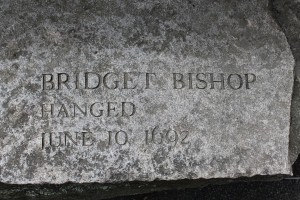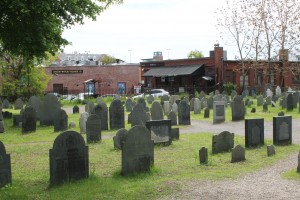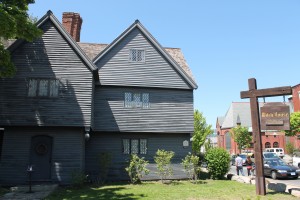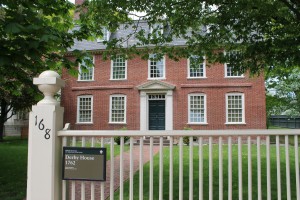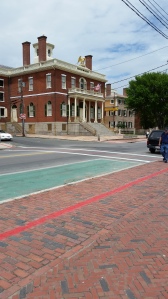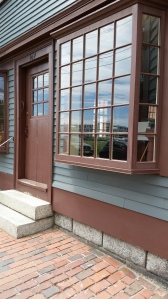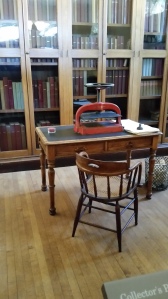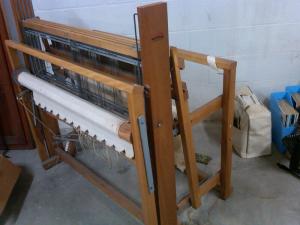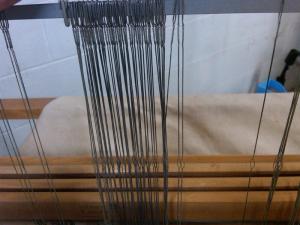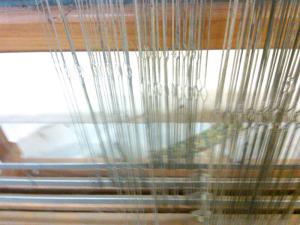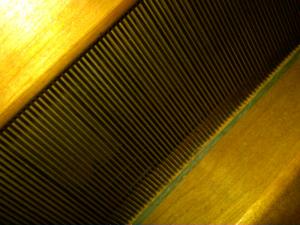Until the Industrial Revolution weaving, and the words associated with the equipment and materials, was probably as familiar to most people as the words we now use to describe our cars.Now most of the terms sound like a foreign language unless, of course, you are a hand weaver who loves the craft and still weaves in the traditional European manner. I clarify with European because a different style of weaving, still practiced in Peru and other such countries, employs the backstrap loom. Instead of a beam, the warp goes around the weaver’s back. Using memorized patterns, their fingers pick up the threads and press the weft through. (It is truly amazing to see their fingers blur as they pluck the threads, similar to watching a good guitar picker.)
However, the ‘weaver’s cross’ is still obvious and as my weaving teacher once told me there is no weaving without the cross.
Anyway, I would venture to guess that most people know maybe three or four words that pertain to weaving : warp, weft, shuttle and loom. I would also bet that there is some confusion in most people’s minds between warp and weft. (Just so we’re clear, warp is the the skeleton of fibers that runs from beam to beam in a loom. The weft is the fiber sent crossways through the warp on the shuttle.) The loom, on the other hand, is not a static piece of equipment but has many pieces that work together to take two strands of fiber and make them into finished cloth.
A loom can be warped back to front or front to back so, depending upon the method, the steps would be slightly different. But the basic process is the same.
The warp is wound upon a warping board, a board or free standing rack with pegs. Ties are put at each end of the cross and then at each end of the warp at about one yard intervals. These ties are called choke ties; these are released once the warp is put on the loom. Long thin sticks called lease sticks are inserted on either side of the cross to hold it while the warp is wound around the rear apron rod. The warp is spread and the fibers are brought forward and threaded through the heddles. These are slim metal pieces that hang down from on rod on the castle. Each heddle has an eye and each thread must be pulled through a heddle. Then the strands are pulled through another piece that slips into the loom, a piece that resembles a comb although closed on both sides, and is called a reed. This step is called sleying the reed, I am not sure why. The reeds have slits of varying thicknesses depending upon thickness of the threads: cotton, linen, wool or silk, that is drawn through them and how closely woven you want the cloth to be. Each handful of finished strands are knotted loosely to keep them tidy. When all the warp is finished, it is tied to the front beam.
Confused yet? Every loom has a certain number of shafts from 2 on up. The more sheds, the more complicated a pattern can be woven. What is a shed you ask? The framework that holds the heddles. The space between the upper and lower warp is call a shaft and it is through this space that a shuttle goes. The treadles, foot pedals on the floor, are attached to the bar that connects these shafts. Stepping on the treadles raises and lowers different shafts, different warp threads in other words, and it is this interaction that creates a pattern.
At its most basic, stepping on a treadle lifts a certain number of threads. The shuttle with the weft thread passes through to the other side. Then you push a piece of the framework called the beater that pushes the weft tight. Step on another treadle, lift another set of threads, and pass the shuttle back to the first side.
Problems can arise at any point. Your warp threads can break. The tension of your warp may not be even. You may have missed threading a strand through a heddle or the reed.
Sounds complicated doesn’t it? And it is. Another quote from my weaving teacher: weaving is a process of constant problem solving. Although looms are now mechanized, this basic design: the cross, the sheds, the shuttle has not changed. The big difference is that a hand weaver, such as Rees, would use his feet to raise and lower the sheds and it would take him a lot longer to finish several yards of cloth.
A traveling weaver, such as Rees, would have to reassemble his loom at every stop, make a warp and put it on the loom, thread the heddles and so on before he even began weaving. Then the loom would have to be disassembled at the end of his job. No wonder weavers were considered skilled craftsmen and completed an apprenticeship of several years.
As complex and labor intensive as this process seems, a weaver was still able to keep 9 to 11 spinners busy.


